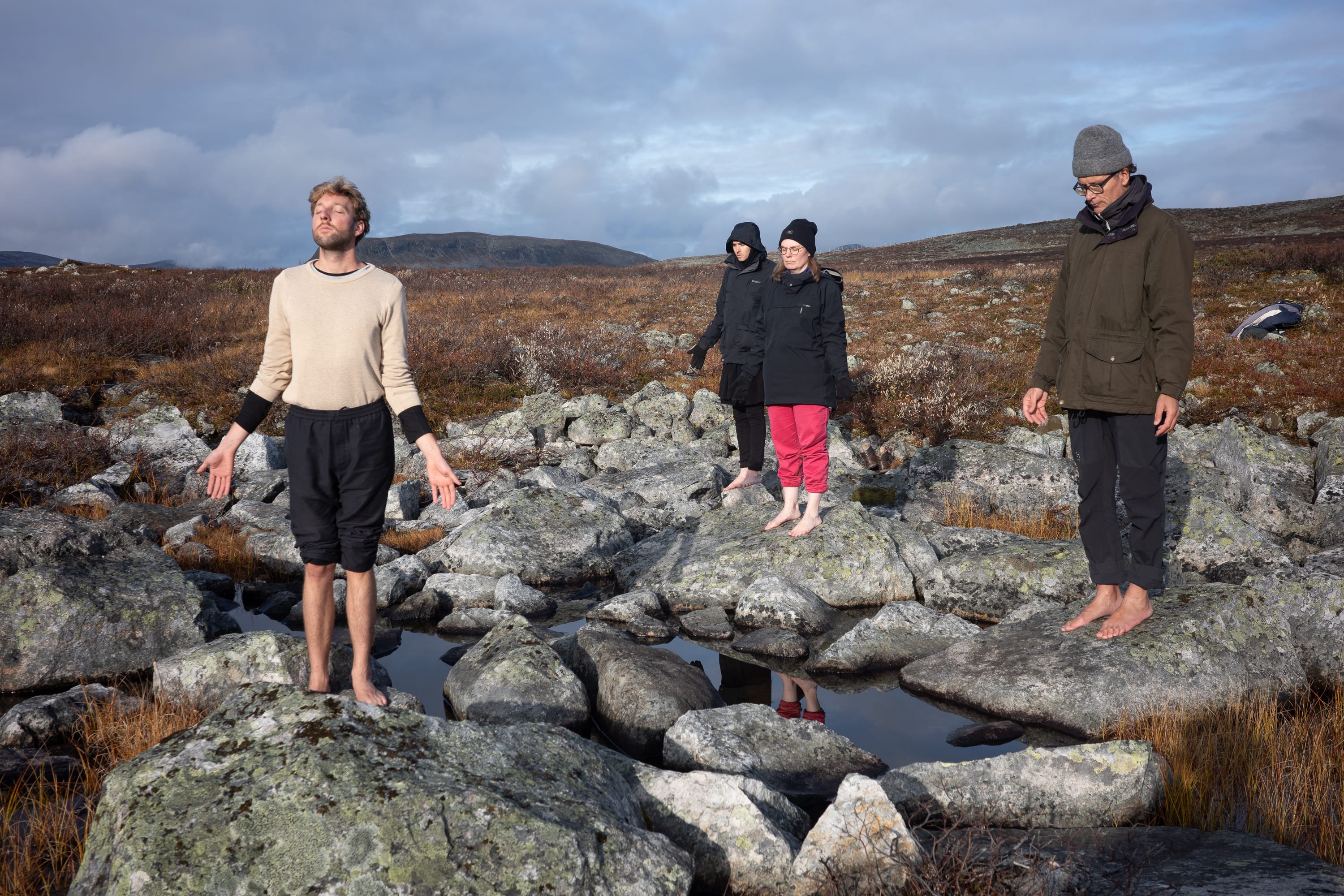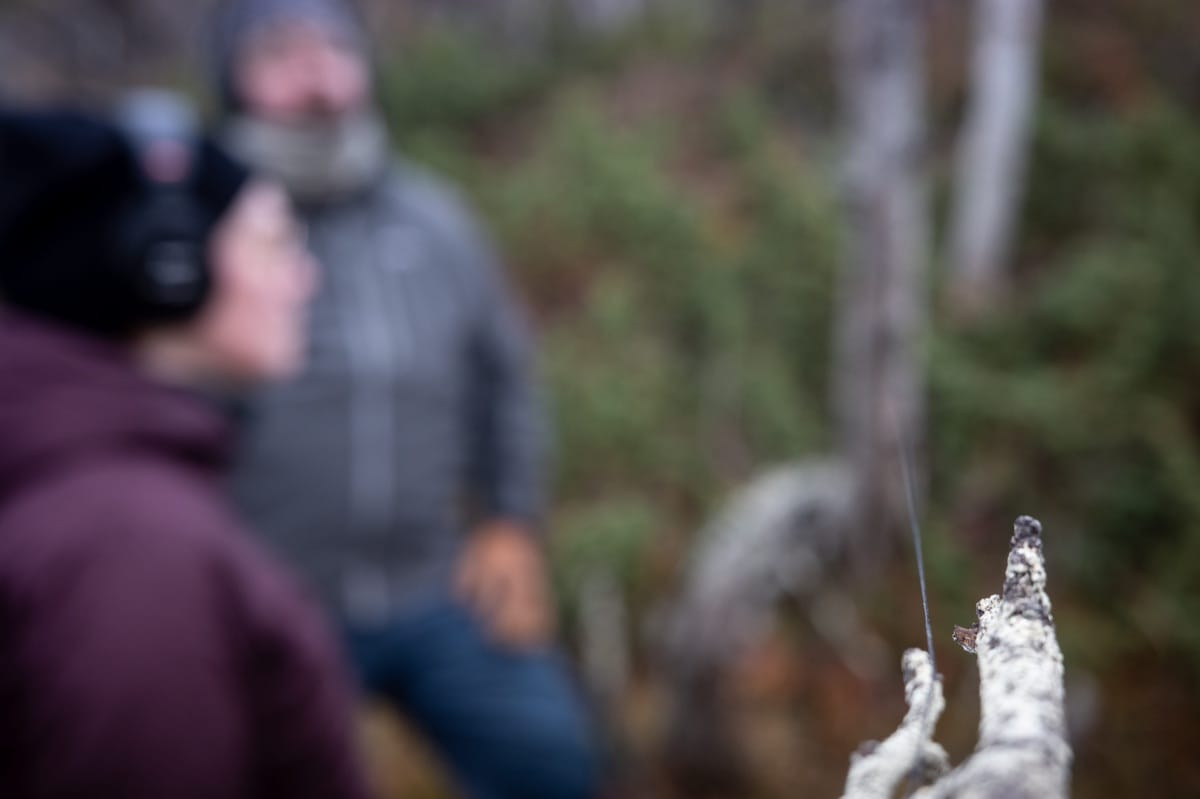
[Photo by Till Bovermann]
The North Escaping by Wait and Hear
Wait and Hear is an international and interdisciplinary group of artists, researchers and practitioners exploring what they call ecological listening. Our fieldwork examines relations between sound and environment, emphasizing multispecies ethics, ecological listening practices, and human/more-than-human tensions.
Our group was formed in 2023 as part of Field_Notes: The North Escaping in Kilpisjärvi, Finland, where we investigated connections between sound and climate change in the Subarctic region. Over the course of two weeks, we worked and lived together in the Kilpisjärvi Biological Station, exploring the region and its surroundings through listening, somatic experience, and other practices. Wait and Hear comprises anthropologist Alicja Staniszewska, artist-researcher Bartaku, social designer and researcher Jan Christian Schulz, artist Joshua Le Gallienne, multidisciplinary artist Mari Mäkiö, and artist, researcher, and educator Till Bovermann.

[Photo by Till Bovermann]
How do we deal with the retreat of the North as we know it? How do we navigate the ever-approaching uncertainty and wickedness of change? The Wait and Hear group proposes an open exploration based on listening. It extends an invitation to encounter, experience and comment on Kilpisjärvi — the region, the lake, the settlement, the living — as what we will refer to as Organism(s), through which a manifold of consequences and influences of human intervention, their diffusion, and their interrelations are starkly noticeable. While we spend time in the field and critically analyze our surroundings, ourselves, and our interrelation to the different forms our surrounding presents itself, we try to resist the urge to immediately engage for as long as possible.
Instead, we gather on fells listening to wind, stones and water. We observe the hustle and bustle of the border town with all its social and cultural clashes. We engage with various stakeholders that are entangled within the Organism(s) themselves.
Our gathered insights unfold into collaborative experiments and in-situ interventions, offering possibilities to encounter, provoke, comment, and interact with our environment.

[Photo by Till Bovermann]
 [Photo by Till Bovermann]
[Photo by Till Bovermann] [Photo by Till Bovermann]
[Photo by Till Bovermann] [Photo by Mari Mäkiö]
[Photo by Mari Mäkiö]
[Photo by Till Bovermann]